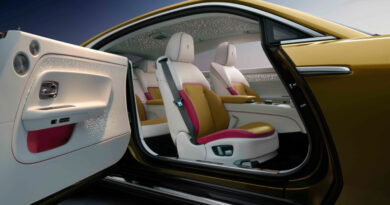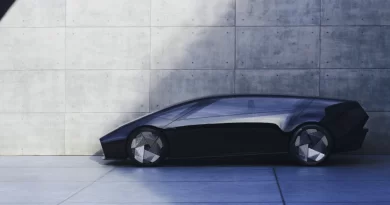Corby answers the $456,000 question: Is the luxury-soaked Bentley Flying Spur the world’s most pointless plug-in hybrid?
I don’t know about you, but when I picture climate warriors – the kind who’ll chain themselves to things, get arrested, become Senators and then realise that changing the system is about as effective as attempting to save polar bears by sleeping naked on ice – I don’t see them driving Bentleys that cost $456,000.
If you’ve got that much money to drop on a luxury sedan that’s slightly larger than the barn where you keep your polo pony, chances are you live and work at the more resource rapacious end of the spectrum. You fly more than most people, possibly in your own jet or helicopter, and your annual carbon footprint is roughly the size of Sicily.
Which does make me wonder, is the Bentley Flying Spur Hybrid the most misguided, pointless and unlikely to sell vehicle ever fitted with an electric motor?
READ MORE: Bentley 5 electric luxury cars in total over 5 years
READ MORE: Bentley starts Aussie electric move with PHEV Flying Spur launch
Right now, you see, a Bentley owner, his pockets jingling with bullion, can waltz into a showroom and buy the Flying Spur Speed, with a W12 engine (two V6s rammed together by engineers who pour fuel straight down drains in their spare time because they just love using as much of it as possible) that allegedly uses 14.7 litres per 100km, but realistically a lot more.
I drove one last week, and it was hilarious, with its 467kW and 900Nm and the ability to hit 100km/h in 3.8 seconds, but also absurd, because it costs $573,900.
That same well-heeled punter will also be offered in a Bentley showroom a very different Flying Spur, the Hybrid, which will still cost $456,000, but comes with just one V6 engine, a 2.9-litre twin-turbocharged one, making 305kW and 500Nm, attached to an electric motor, good for 100kW and 400Nm. The combined system outputs are 400kW and 750Nm, which doesn’t sound that far off the W12, which just shows you how misleading numbers can be.
The e-motor is matched with an 18kWh lithium-ion battery pack good that will allegedly get you 40km of electric-only driving. Using a typical and slightly whimpish 7.2kW charger (like the one I have in my driveway) can recharge the battery from empty in “less than three hours”. I managed this in one hour and 50 minutes, on a sunny day, using my solar panels, and felt very smug. Not quite Bentley-affording smug, but still.
The thing is, when I picked up the Hybrid it was indicating 40km of EV range, which had vanished entirely after 25km, at which point the engine kicked in and sounded like Kyle Sandilands attempting to run up a hill. My full recharge had dropped to 38km the morning after I’d zapped it, and after 20km of very careful, slow driving it was down to 11km when I dropped it back.
But putting myself in the mindset of a Bentley owner, as much as I could, would I actually ever go through the hassle of recharging by Flying Spur every day? Would I put up with the fact that it doesn’t feel as entirely effortless and overpowered as a Bentley should? And would I be asking why, when Rolls-Royce already has one, in the alluring shape of the new Spectre, Bentley doesn’t have a fully electric vehicle to sell me instead?
Bentley has announced that by 2026 it will sell only PHEVs and EVs (which should really boost sales of the W12 before then), and yet its first proper BEV won’t go on sale until… 2026 (the plan was 2025, but the company now says that’s too soon). By 2030, it will only make EVs, and I have no doubt that they will be, much like the Spectre, wonderful.
Luxe vehicles like this, in which the sound of an engine has always been unnecessary, bordering on an imposition. Gearboxes that need shifting are also something Bentley owners won’t miss when they’re gone.
I know that you can argue PHEVs are the bridge that people have to get over to reach an EV future, and I agree that they can work, for some brands (the Mitsubishi Outlander for example), but this Bentley Hybrid, particularly at $589,461 (which is what my test vehicle cost, with some lovely options) makes about as much sense as an underwater helicopter.




